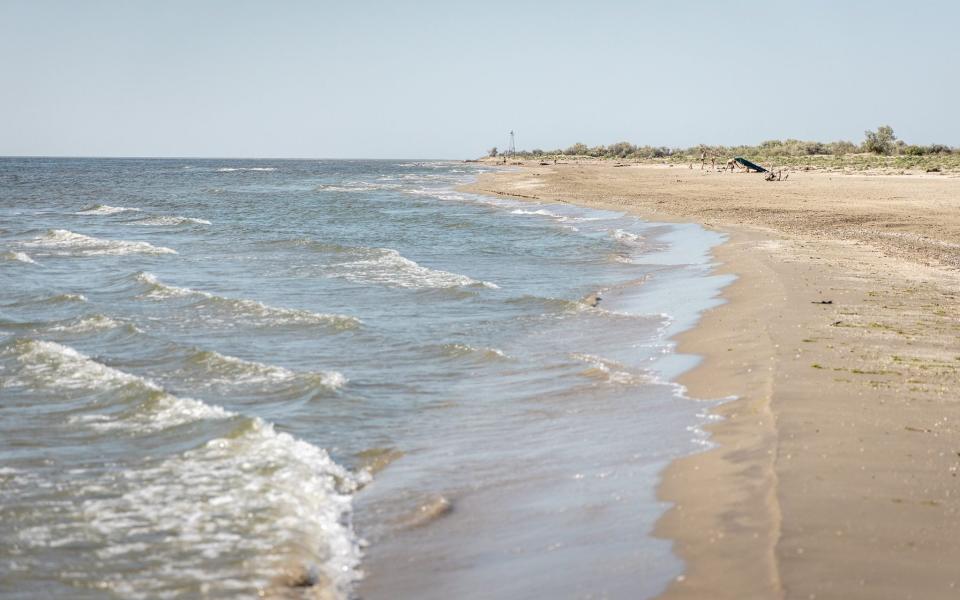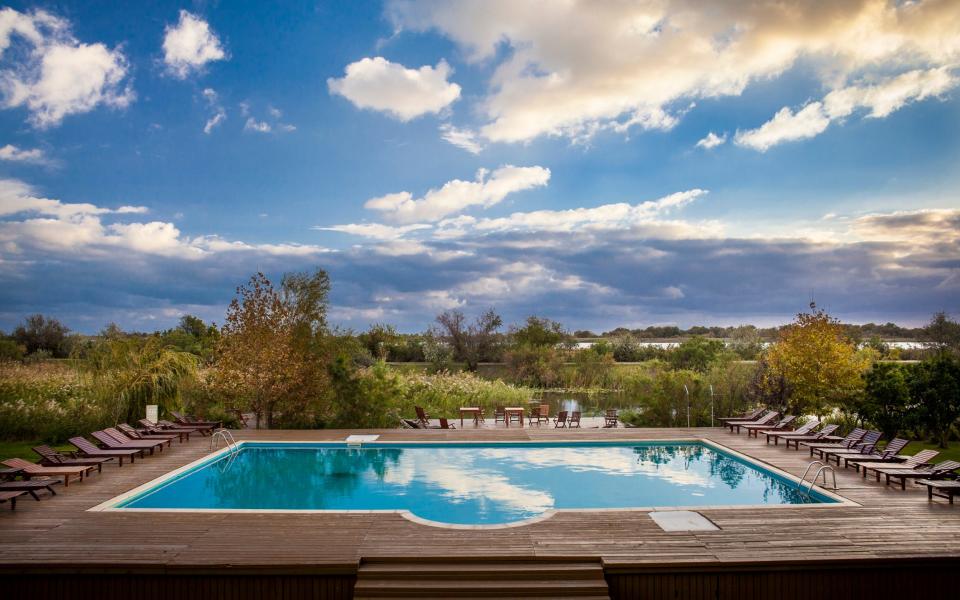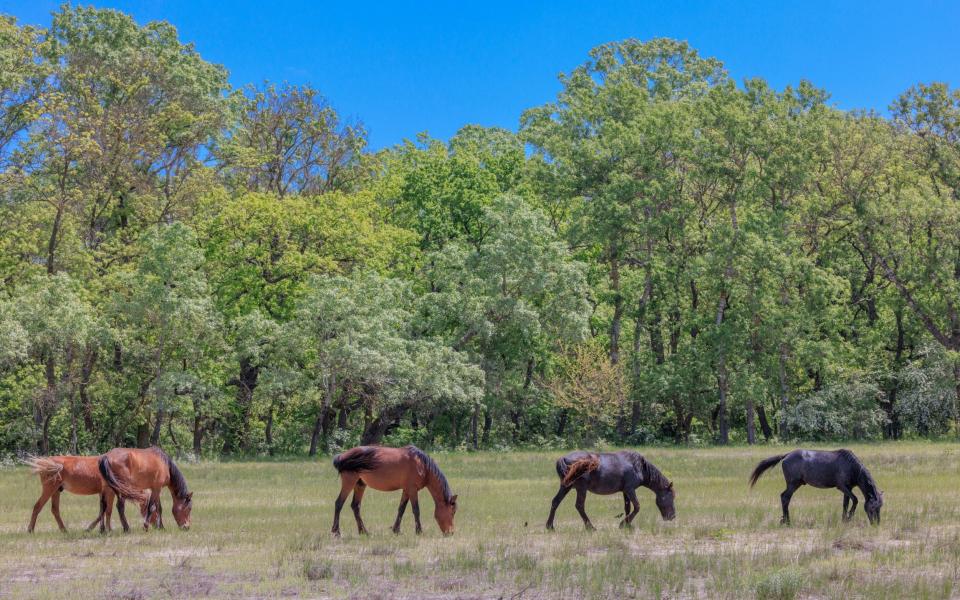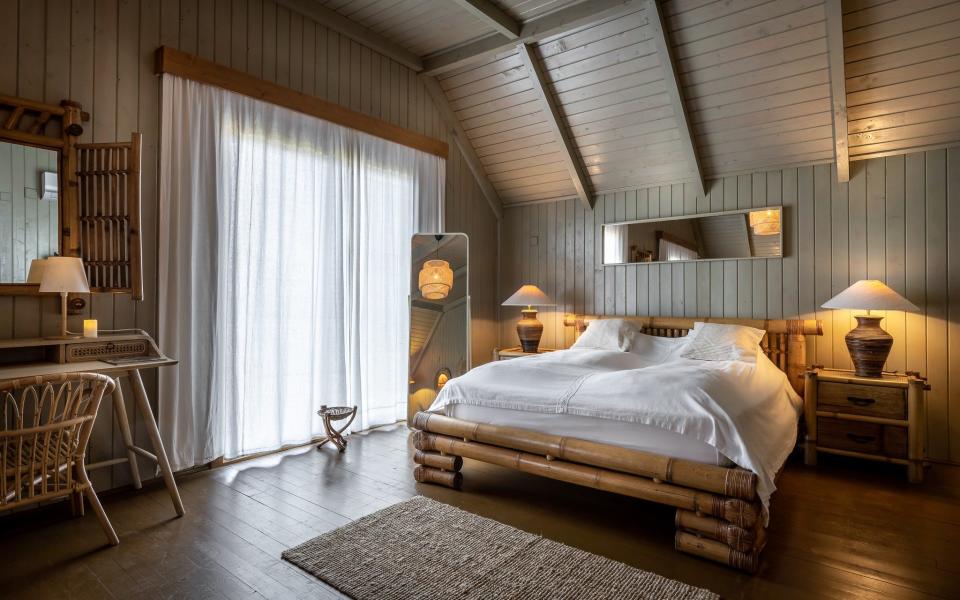Romania has 152 miles of coastline, and I have a reliable source that most of it is covered in the finest sand you’ll find in the Caribbean. Lured by the promise of beautiful beaches—along with cheap food, beer, and great-value accommodation—I boarded a flight to Constanta, the country’s largest port city, in early June (direct from the UK), rented a car there, and set off, following signs to Tulcea.
The landscape was not at first very inspiring: seemingly endless wheat fields dotted with faded Soviet-era villages. But near Sarichol, the landscape changed abruptly when a turtle crossed my path. Instead of wheat fields, the road was lined with tall trees, the tops of which were covered with stork nests; the ugly apartment blocks had been replaced by thatched-roof single-storey houses, their facades painted in dusty pink, pistachio green and poppy red, overlooking bucolic gardens planted with onions, melons, tomatoes and roses. Perhaps my decision to take a beach holiday in a country best known for Dracula and Dacia was not entirely misguided.

“We are very proud of our homes. After the 1989 revolution, we had the chance to buy a house, and so did everyone else. According to the latest figures, Romania now ranks first in the world for private home ownership – 96% of people own their own property,” said Sergiu Pol, a fellow traveller from Brasov, when I arrived in the village of Murighiol a short time later. I had gone there to catch a river boat to the Green Village Resort in the coastal town of Sfântu Gheorghe (not to be confused with the town of Sfântu Gheorghe in central Romania).
At the heart of the 580,000-hectare Danube Delta, where Europe’s second-longest river flows into the Black Sea, Sfântu Gheorghe can be reached only by water or by walking about 65 miles through marshes. Although Romanian tourists do come, few foreign tourists come—I was the only non-local passenger on a small boat big enough for 10 people and luggage. White-tailed eagles and shaggy Dalmatian pelicans soared overhead as herds of long-horned cattle wallowed like hippos in the bottle-green waters.
Wet from the splash, we emerged onto a narrow iron pier lined with the blackened hulls of traditional canoe-like fishing boats, most of which had been abandoned since the resort became part of the Danube Biosphere Reserve. “We’ve been fishing sustainably here since the Middle Ages, but now they only give out a few fishing licences a year – Europe has destroyed the local way of life,” muttered Mihai, the receptionist, as he showed me to my suite, crowned by a thatched roof and a nest of chattering storks.


I expected mosquitoes, cement-hard mattresses and Brutalist furniture, but the beds were plump and the wooden floors and ceilings reminded me of a mountain chalet. Best of all, the large swimming pool has panoramic views across a lily-padded Danube distribution canal. And what about the price? €100 (£84) per night, including breakfast and lunch.
After breakfast, greeted by grazing cattle and serenaded by cuckoos and grunting spoonbills, I walked along a sandy path to the beach, which was almost deserted despite the 30C temperature. The sand, which stretched for miles in either direction and was strewn with the ribbed shells of Venus clams, was grey as clay but soft as talcum under my bare feet. I spent most of the next few days sunbathing, splashing in the waves and watching great white pelicans scoop up fish.
At lunchtime, to keep out the heat, I enjoyed cheap snacks of crisps and ice-cold bottles of Ursus beer at one of the two canteens behind the beach. A plate full of “crap la gratar” (fried carp with bread) cost 45 leu (about £7.50) and my favourite dish was the the biggest axe (crispy frog legs with garlic sauce) was even cheaper at 35 leu (£6).


On the hottest days I cooled off with boat trips: one afternoon to visit the old fishery of Gârla Turceascé and the Letea Forest, where wild horses have lived for centuries; another to spend a few happy hours looking at the ornate graves of pirates and princes in the cemetery of Sulina, one of Romania’s oldest settlements.
Overlooking the village’s fishing harbour, La Sfatoi, a local haunt where fresh mussels cooked with white wine and bread cost £8, has become my favourite place to watch the sunset flowing beneath the inky waters of the Danube, accompanied by the chorus of thousands of frogs.
After a week in this magical place, I stopped for lunch at a café as I headed back to the busy road to Constanta. The TV reporters were discussing Romania’s decision to adopt the euro after it finally became a Schengen member. I asked the waiter if he was happy with the prospect. He gave me an impatient look and handed me a huge £5 plate of pork sarma (cabbage rolls) and a £2 beer. “Enjoy our cheap country while you can,” he joked.


How to do it
Fly from London Luton to Constanta (from £112 with Wizz Air) and hire a car with Enterprise to reach Murighiol and the boat to Sfântu Gheorghe (from £23 per day). Double rooms at Green Village Resort start from £73 per night, including breakfast.